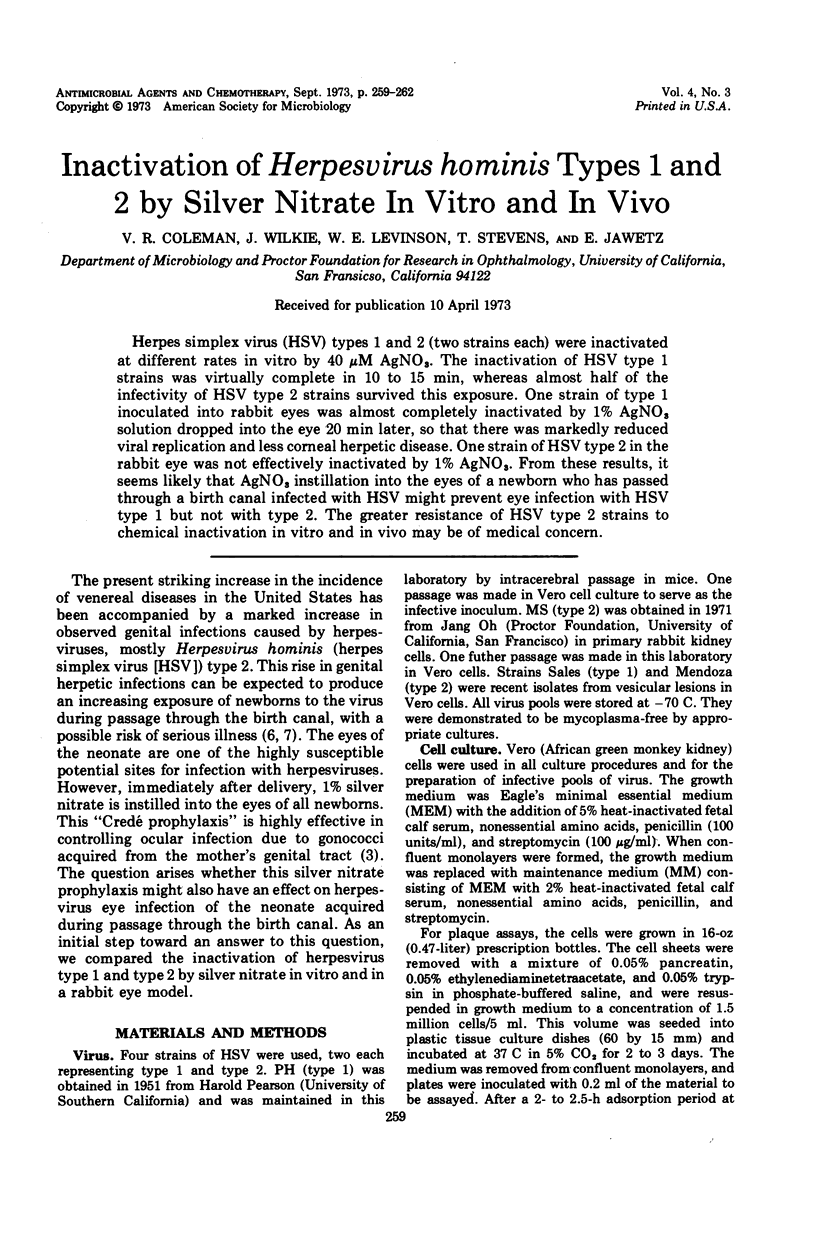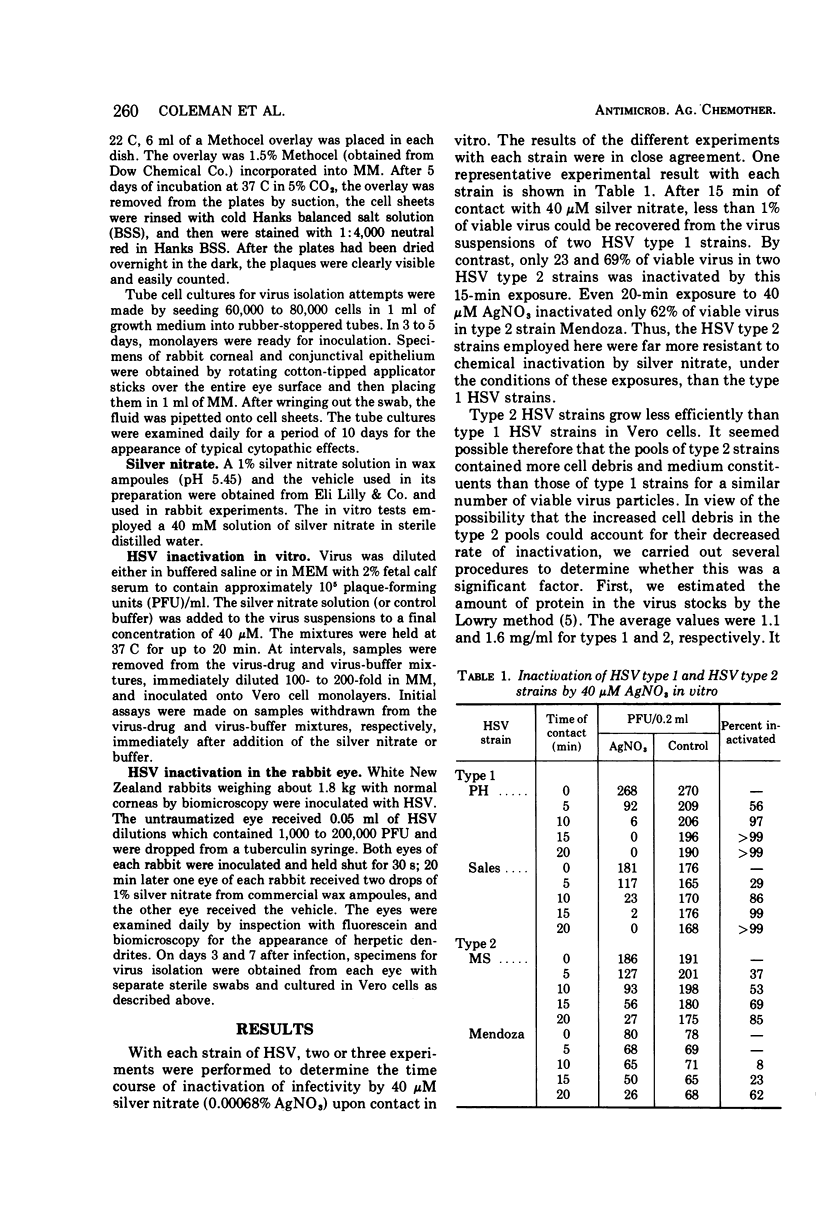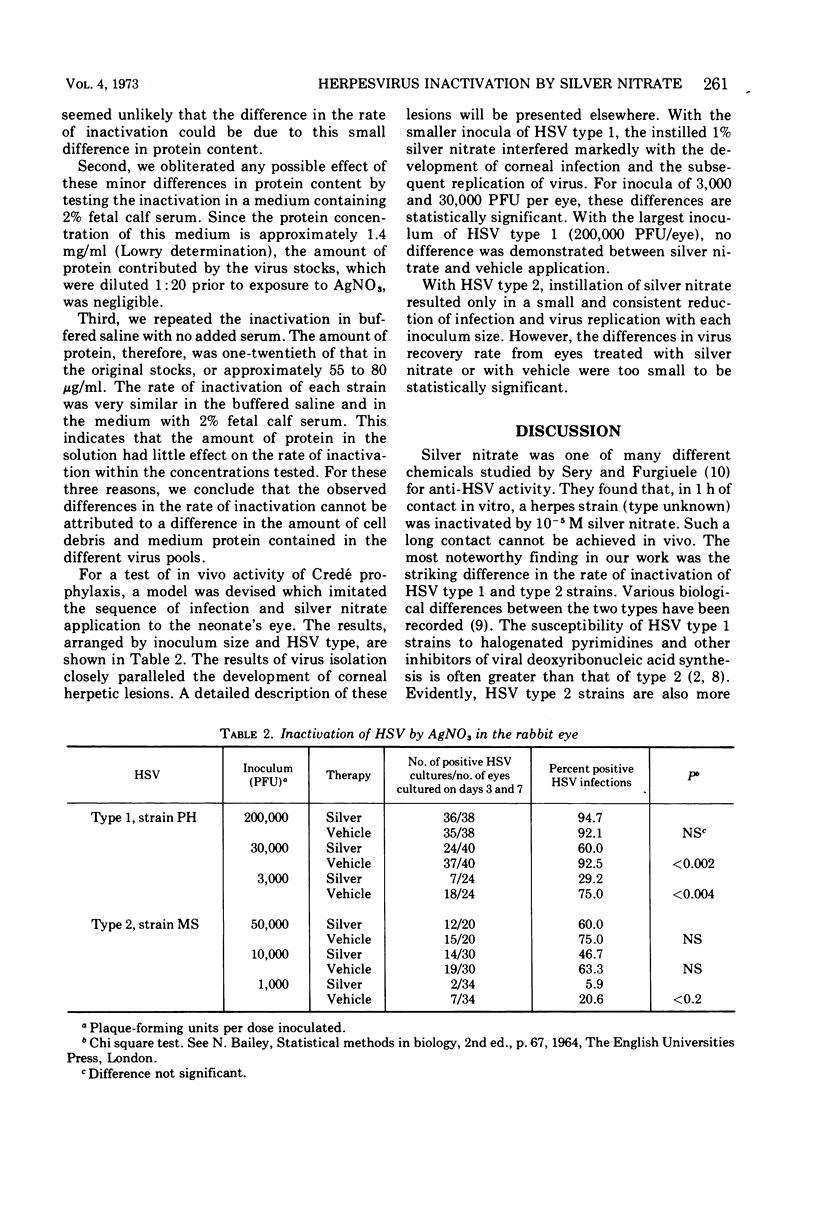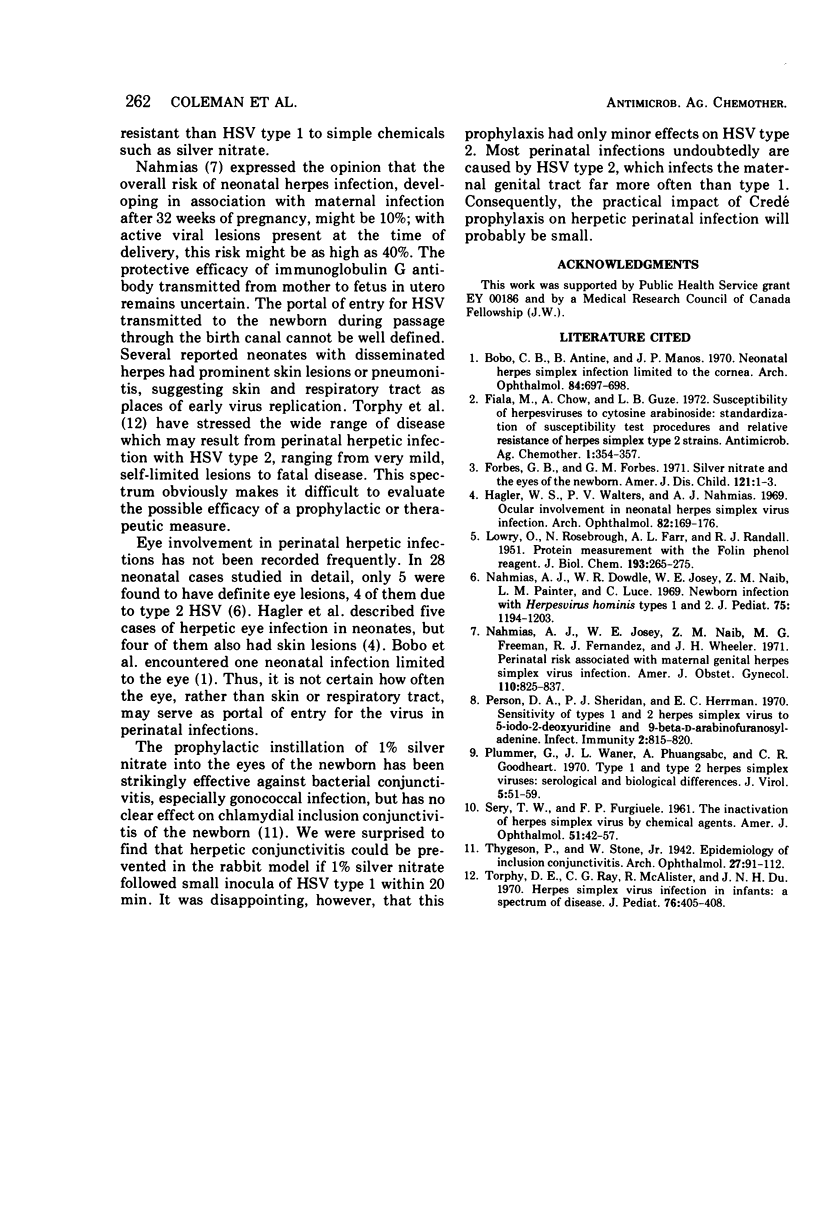Abstract
Herpes simplex virus (HSV) types 1 and 2 (two strains each) were inactivated at different rates in vitro by 40 μM AgNO3. The inactivation of HSV type 1 strains was virtually complete in 10 to 15 min, whereas almost half of the infectivity of HSV type 2 strains survived this exposure. One strain of type 1 inoculated into rabbit eyes was almost completely inactivated by 1% AgNO3 solution dropped into the eye 20 min later, so that there was markedly reduced viral replication and less corneal herpetic disease. One strain of HSV type 2 in the rabbit eye was not effectively inactivated by 1% AgNO3. From these results, it seems likely that AgNO3 instillation into the eyes of a newborn who has passed through a birth canal infected with HSV might prevent eye infection with HSV type 1 but not with type 2. The greater resistance of HSV type 2 strains to chemical inactivation in vitro and in vivo may be of medical concern.
Full text
PDF



Selected References
These references are in PubMed. This may not be the complete list of references from this article.
- Bobo C. B., Antine B., Manos J. P. Neonatal herpes simplex infection limited to the cornea. Arch Ophthalmol. 1970 Nov;84(5):697–698. doi: 10.1001/archopht.1970.00990040699027. [DOI] [PubMed] [Google Scholar]
- Fiala M., Chow A., Guze L. B. Susceptibility of herpesviruses to cytosine arabinoside: standardization of susceptibility test procedure and relative resistance of herpes simplex type 2 strains. Antimicrob Agents Chemother. 1972 Apr;1(4):354–357. doi: 10.1128/aac.1.4.354. [DOI] [PMC free article] [PubMed] [Google Scholar]
- Forbes G. B., Forbes G. M. Silver nitrate and the eyes of the newborn. Credé's contribution to preventive medicine. Am J Dis Child. 1971 Jan;121(1):1–3. doi: 10.1001/archpedi.1971.02100120037001. [DOI] [PubMed] [Google Scholar]
- Hagler W. S., Walters P. V., Nahmias A. J. Ocular involvement in neonatal herpes simplex virus infection. Arch Ophthalmol. 1969 Aug;82(2):169–176. doi: 10.1001/archopht.1969.00990020171004. [DOI] [PubMed] [Google Scholar]
- LOWRY O. H., ROSEBROUGH N. J., FARR A. L., RANDALL R. J. Protein measurement with the Folin phenol reagent. J Biol Chem. 1951 Nov;193(1):265–275. [PubMed] [Google Scholar]
- Nahmias A. J., Dowdle W. R., Josey W. E., Naib Z. M., Painter L. M., Luce C. Newborn infection with Herpesvirus hominis types 1 and 2. J Pediatr. 1969 Dec;75(6):1194–1203. doi: 10.1016/s0022-3476(69)80375-6. [DOI] [PubMed] [Google Scholar]
- Nahmias A. J., Josey W. E., Naib Z. M., Freeman M. G., Fernandez R. J., Wheeler J. H. Perinatal risk associated with maternal genital herpes simplex virus infection. Am J Obstet Gynecol. 1971 Jul 15;110(6):825–837. doi: 10.1016/0002-9378(71)90580-1. [DOI] [PubMed] [Google Scholar]
- Person D. A., Sheridan P. J., Herrmann E. C. Sensitivity of Types 1 and 2 Herpes Simplex Virus to 5-Iodo-2'-Deoxyuridine and 9-beta-d-Arabinofuranosyladenine. Infect Immun. 1970 Dec;2(6):815–820. doi: 10.1128/iai.2.6.815-820.1970. [DOI] [PMC free article] [PubMed] [Google Scholar]
- Plummer G., Waner J. L., Phuangsab A., Goodheart C. R. Type 1 and type 2 herpes simplex viruses: serological and biological differences. J Virol. 1970 Jan;5(1):51–59. doi: 10.1128/jvi.5.1.51-59.1970. [DOI] [PMC free article] [PubMed] [Google Scholar]
- SERY T. W., FURGIUELE F. P. The inactivation of herpessimplex virus by chemical agents. Am J Ophthalmol. 1961 Jan;51:42–57. doi: 10.1016/0002-9394(61)91310-1. [DOI] [PubMed] [Google Scholar]
- Torphy D. E., Ray C. G., McAlister R., Du J. N. Herpes simplex virus infection in infants: a spectrum of disease. J Pediatr. 1970 Mar;76(3):405–408. doi: 10.1016/s0022-3476(70)80480-2. [DOI] [PubMed] [Google Scholar]


